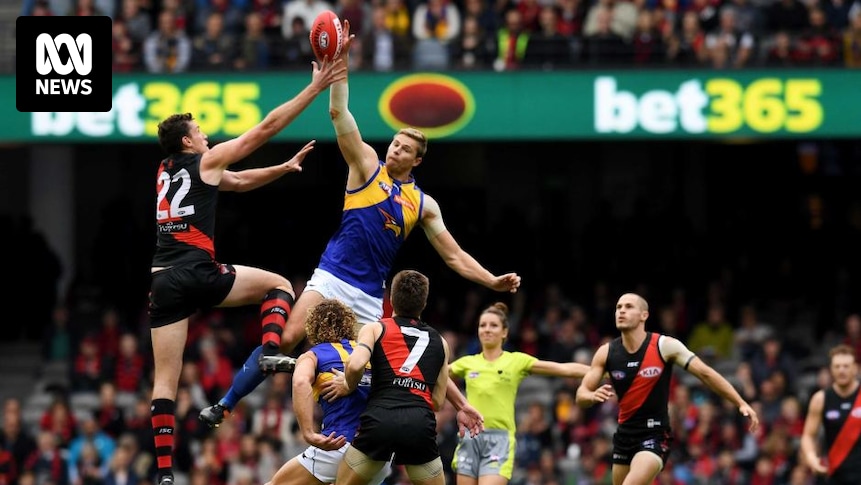
The Olympics are over. As is customary in the latter, athletics-dominated phases of the event, Australians have made our seamless quadrennial migration from “actual medal count” to “per capita medal count” as the preferred measure of success.
Tell you what though. There’s one recreational activity at which we are the uncontested world champions, loud and proud, every year.
You know what it is? Gambling.
Australia has 0.5 per cent of the world’s population, but 20 per cent of its poker machines. We lose $25 billion a year on the punt. That makes us the highest per capita losers in the whole world, with daylight second (and then Hong Kong).
If “pissing money up against the wall” ever catches the roving eye of the IOC as a spectator sport with a future, our Olympic form would explode.
Nobody’s talking about banning gambling; that would be un-Australian.
But the degree of trepidation with which the federal government is this week mincing around even the second-order question of banning gambling ads — just the ads! — gives you a very pungent sense of just how powerful this industry is.
It’s also an object lesson in how as a nation we calculate value, how we calculate damage, and who — most crucially — we feel OK about asking to pick up the bill.
The enormous cost of problem gambling
We have a lot of data about gambling in Australia. We know that problem gamblers here are “generally more likely to be young, single, unemployed or not employed, Indigenous, men, living in rental accommodation, in a low-socioeconomic area, and more likely to draw their income from welfare payments than those who had no problems”.
We know that problem gambling — which affects about 17 per cent of regular gamblers, though this shoots up as high as 70 per cent among young men — is deeply connected to a number of other social problems in this country; problems over which we regularly wring our hands. Domestic violence. Suicide. Homelessness. Indigenous disadvantage. Substance abuse. Mental illness.
Loading…
We know, too, that problem gambling is a behavioural addiction recognised in the DSM-5. That while many people enjoy “a flutter” and rightly consider their choice to do so a free one, there are people for whom gambling is not a choice at all. We know that for every person so afflicted, there are six other people affected adversely by their behaviour.
We know a few things about gambling advertising, too. We know it’s a significant driver of gambling activity. That’s why the big companies spend so much on it: $238 million in one year spent on ads across free-to-air TV, radio and online, according to an ACMA-commissioned audit.
More specifically, it’s a huge driver of growth in the newest form of gambling, which is online. Australians lost $5.57 billion on online gambling in 2019. By 2022, that figure had nearly doubled to $9.56 billion.
In 2010, 12 per cent of Australians were gambling online. By 2019, it was 30 per cent. By 2022 — thanks to a significant COVID spike — it was 44 per cent.
We also know that Australians are annoyed by the growth in advertising — an ACMA survey in 2019 found that 75 per cent of parents were “bothered” by the fact that their children were exposed to it.
So that’s what we know. It’s a fact matrix that last year inspired a bipartisan group of MPs to conclude that the best thing to do, as quickly as possible, would be to ban gambling advertising on all platforms.
But what’s happening right now in Canberra is something different. The government has drafted legislation for a partial ban, seemingly overruling the recommendation of its own MPs who studied this question in-depth. The whole process is shrouded in mystery. Anti-gambling groups were obliged to sign non-disclosure agreements last week just to get a briefing on the proposed legislation. At today’s Caucus meeting, the issue was not mentioned, despite significant discomfiture among various Caucus members with strong views.
Loading
A hypothecated tax on the disadvantaged
It’s not unusual for governments to disappoint reformists with strong views. Compromise is a huge part of public policy. But the driving forces for moderation here have little to do with the actual issue of gambling-related damage.
They have to do with the struggling free-to-air TV industry being highly dependent on the revenue from gambling ads. They have to do with popular sporting codes harvesting significant revenue from their partnerships with gambling giants – see this Four Corners episode for detail.
The Prime Minister told Question Time on Monday that he was concerned about “unintended consequences” of a full ban.
NDIS Minister Bill Shorten told the ABC’s Q&A on Monday night that free-to-air TV networks — dependent on the ad revenue and under assault from social media behemoths like Facebook — were in “diabolical trouble” and deserved assistance.
Loading…
For perspective: ACMA found that free-to-air TV networks took in $162 million in advertising from gambling over the 2022-23 financial year.
In Mr Shorten’s home state of Victoria alone, meanwhile, the broader cost of problem gambling has been estimated at $7 billion a year.
We know who bears that cost. Families, employers, and children of gamblers who can’t help themselves and whose losses account for a disproportionate share of the gambling giants’ profits.
It’s a much bigger cost than the projected cost to the free-to-air television industry of a gambling ad ban, but those paying it are more disparate, less audible, and less good at lobbying.
Gambling profits and taxes are about the closest thing we have in this country to a hypothecated tax on the disadvantaged. Is there any reason why their continuation should be tied by definition to the survival of free-to-air television?
None at all. But they will be: You can bet on it.